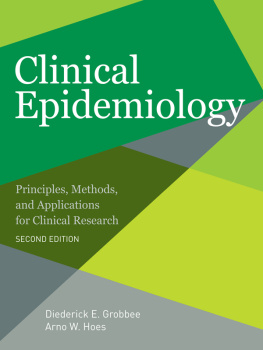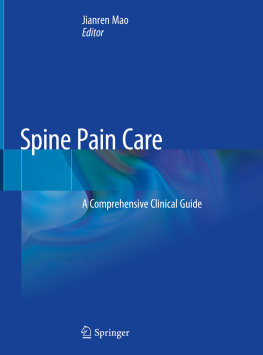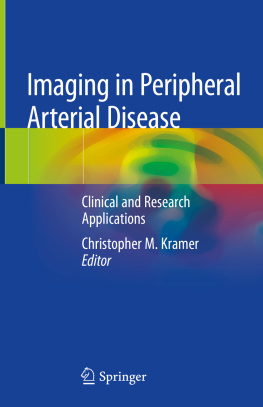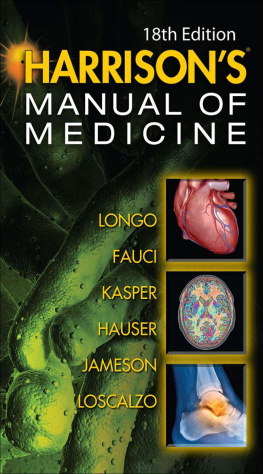

World Headquarters
Jones & Bartlett Learning
5 Wall Street
Burlington, MA 01803
978-443-5000
www.jblearning.com
Jones & Bartlett Learning books and products are available through most bookstores and online booksellers. To contact Jones & Bartlett Learning directly, call 800-832-0034, fax 978-443-8000, or visit our website, www.jblearning.com.
Substantial discounts on bulk quantities of Jones & Bartlett Learning publications are available to corporations, professional associations, and other qualified organizations. For details and specific discount information, contact the special sales department at Jones & Bartlett Learning via the above contact information or send an email to .
Copyright 2015 by Jones & Bartlett Learning, LLC, an Ascend Learning Company
All rights reserved. No part of the material protected by this copyright may be reproduced or utilized in any form, electronic or mechanical, including photocopying, recording, or by any information storage and retrieval system, without written permission from the copyright owner.
The content, statements, views, and opinions herein are the sole expression of the respective authors and not that of Jones & Bartlett Learning, LLC. Reference herein to any specific commercial product, process, or service by trade name, trademark, manufacturer, or otherwise does not constitute or imply its endorsement or recommendation by Jones & Bartlett Learning, LLC and such reference shall not be used for advertising or product endorsement purposes. All trademarks displayed are the trademarks of the parties noted herein. Clinical Epidemiology: Principles, Methods, and Applications for Clinical Research, Second Edition is an independent publication and has not been authorized, sponsored, or otherwise approved by the owners of the trademarks or service marks referenced in this product.
There may be images in this book that feature models; these models do not necessarily endorse, represent, or participate in the activities represented in the images. Any screenshots in this product are for educational and instructive purposes only. Any individuals and scenarios featured in the case studies throughout this product may be real or fictitious, but are used for instructional purposes only.
This publication is designed to provide accurate and authoritative information in regard to the Subject Matter covered. It is sold with the understanding that the publisher is not engaged in rendering legal, accounting, or other professional service. If legal advice or other expert assistance is required, the service of a competent professional person should be sought.
Production Credits
Executive Publisher: William Brottmiller
Publisher: Michael Brown
Associate Editor: Chloe Falivene
Editorial Assistant: Nicholas Alakel
Associate Production Editor: Rebekah Linga
Senior Marketing Manager: Sophie Fleck Teague
Manufacturing and Inventory Control Supervisor: Amy Bacus
Composition: Cenveo Publisher Services
Cover Design: Scott Moden
Photo Research and Permissions Associate: Ashley Dos Santos
Cover Image: Volta_ontwerpers, Utrecht
Printing and Binding: Edwards Brothers Malloy
Cover Printing: Edwards Brothers Malloy
Library of Congress Cataloging-in-Publication Data
Grobbee, D. E., author.
Clinical Epidemiology: Principles, Methods, and Applications for Clinical Research / Diederick E. Grobbee and Arno W. Hoes.Second edition.
p. ; cm.
Includes bibliographical references and index.
ISBN 978-1-4496-7432-8 (pbk.) ISBN 1-4496-7432-1 (pbk.)
I. Hoes, Arno W., author. II. Title. [DNLM: 1. Epidemiologic Methods. 2. Epidemiologic Factors. 3. Prognosis. WA 950]
RA652.2.C55
614.4dc23
2013030779
6048
Printed in the United States of America
18 17 16 15 14 10 9 8 7 6 5 4 3 2 1
DEDICATION
To Sjoukje and Carin
PREFACE
In the current era of evidence-based medicine, with an abundance of published information and a clear need for relevant applied clinical research, clinical epidemiology is increasingly being recognized as an important tool in the critical appraisal of available evidence and the design of new studies.
This text is intended for those who are currently practicing medicine and related disciplines (such as pharmacy, health sciences, nursing sciences, veterinary medicine, and dentistry) as well as those involved in the design and conduct of applied clinical research. Apart from these users, doers of applied clinical research, notably undergraduate students and PhD fellows in medicine and related disciplines, will also benefit from the information provided. Clinical epidemiology instructors will find the text to be a valuable resource for their classes.
The purpose of the text is to teach both the users and doers of quantitative clinical research. Principles and methods of clinical epidemiology are used to obtain quantitative evidence on diagnosis, etiology, and prognosis of disease and on the effects of interventions. The content of this text reflects our teaching experience on the methodology of applied clinical research over the last 25 years. It was the ever-advancing development of clinical epidemiologic methodology, the increasing discrepancies between our teaching material and existing textbooks of epidemiology, and the many requests from students and practicing physicians for a concise text reflecting our courses that fueled our decision to prepare this novel text.
We hope that our text will contribute to a better understanding of the strengths of clinical epidemiology as well as help both researchers and users of quantitative clinical research in their endeavors to further improve patient care in daily clinical practice.
This edition has been revised and updated extensively. In doing so we benefited enormously from the comments given to us by many readers, specifically the PhD fellows and staff members at the Julius Center for Health Sciences and Primary Care, University Medical Center Utrecht, and in the Department of Epidemiology, Radboud University Medical Center Nijmegen.
As more than three thousand copies of the first edition and reprints have found their way to readers across the globe, we are confident that this text is well appreciated by all those engaged in clinical epidemiologic research or using the results of such studies in clinical practice. We hope this new edition will be similarly appreciated and welcome any comments or suggestions for further improvement.
Diederick E. Grobbee and Arno W. Hoes
FOREWORD
Clinicians often think of epidemiology as distinct from clinical research. As a consequence, epidemiologic methods, disease causation, and preventive medicine, as well as strategic public health issues, have been taught chiefly in epidemiology departments and at schools of public health. Many of these institutions, however, have become too isolated from the practice of medicine and the conduct of clinical research. And both campsepidemiologic research and clinical researchhave suffered from this mutual isolation. Epidemiology would be fertilized by close interaction with clinical medicine, while offering a powerful toolbox derived from advanced methodologic developments to clinical researchers. Epidemiologic principles and methods are not only integral to public health, but also highly relevant to clinical research. However, this fundamental fact is still not adequately appreciated by many clinical investigators.
Next page










